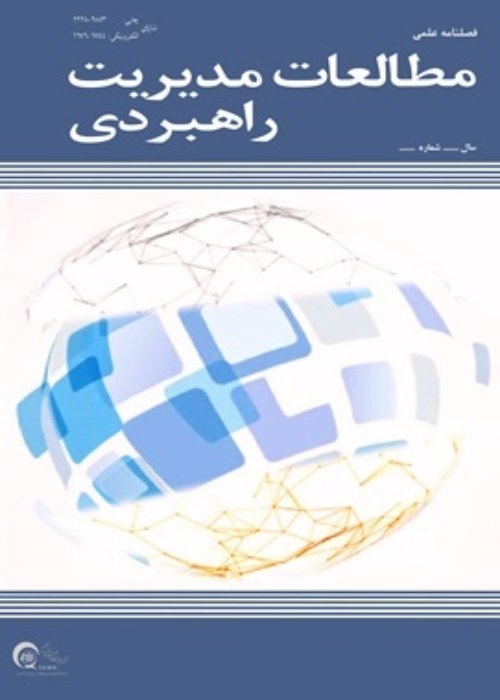Academic social networks evaluation and analysis: A strategy for goal-oriented research
Author(s):
Article Type:
Research/Original Article (دارای رتبه معتبر)
Abstract:
Introduction
Conducting research with a theoretical contribution, reviewing the theoretical background without bias, and identifying emerging research areas are one of the most important concerns of every researcher in conducting academic research. The abundance of useless and scientifically worthless research in the country doubles the need to pay attention to these issues. One of the existing strategies to solve these problems is the approach of academic social networks analysis. Considering research areas as social structures, these networks are drawn based on bibliometric criteria such as co-citation, citation, bibliographic pairing, co-occurrence of vocabulary, and co-authorship, each of which has its uses and are used to answer special questions. In this article, the approach to social networks analysis will be introduced first, and then the bibliometric criteria used in drawing these networks will be examined. It is also stated that each of the drawn networks is suitable for answering what questions. Then, the step-by-step stages of implementing a social network analysis are introduced. Also, the most important databases used to collect the necessary meta-data are introduced and some existing tools to analyze and illustrate academic social networks are briefly reviewed. Examples of applications of this approach are also shown. Methodology
In order to conduct academic social network analysis, a 5-step process must be performed. In the first step, the research design should be determined. The analysis is done to answer what questions and what method is suitable to answer those questions. In the second step, it is necessary to collect bibliographic data. First, you have to choose the right database and then, by choosing the right search keywords in a specific time frame, search and collect the necessary metadata for network drawing and analysis. In the third step, the collected data should be analyzed. In this step, the appropriate bibliographic software should be selected and the data should be prepared for analysis. Illustration of the networks is done in the fourth step, in which the appropriate method and tool of the illustration should be determined by the researcher. In the final step, the drawn networks should be described and interpreted. Results and Discussion
Each of the networks drawn by metadata collected from scientific databases has a specific application. Citation networks are used to identify the most important and influential works, authors, and publications. Also, based on the citation networks drawn based on the timeline, it is possible to identify the development process of a research field, its theoretical foundation, and theoretical fields affecting the research field. Co-citation networks that are drawn based on the cited references of the selected documents provide the most relevant sources for research. Also, the clusters obtained from this analysis show the historical streams of the research field. The bibliographic coupling networks which are the reverse of co-citation examine the cited documents and the clusters obtained from them showing the contemporary streams of the research field under investigation. Co-authorship networks are a measure of cooperation between authors, institutions, publications, and countries. Word co-occurrence networks identify important themes in a domain, and as a content analysis technique, they are the only network that uses the actual content of documents. The output of the word co-occurrence network is a network of themes and shows the conceptual space of a field. Conclusion
Conducting targeted and useful research is one of the important issues faced by researchers and students, especially graduate students who have to conduct research in the form of a thesis or dissertation. From choosing new topics to reviewing literature and theoretical background in an appropriate way, all of them are problems that researchers have to overcome, and in this way, they need a clear strategy and roadmap. The social network analysis approach based on bibliographic criteria is one of the strategies proposed to help solve these problems. The analysis of academic social networks that are formed based on bibliographic criteria such as citation, co-citation, co-authorship, word co-occurrence, and bibliographic coupling, by adding an objective and quantitative accuracy, reduces the consequences of personal reviews and subjective biases of researchers and It helps to get a more comprehensive understanding of research areas. Each of these networks is suitable for answering specific questions. Using the approach of social network analysis can have a significant help in guiding researchers in conducting targeted research. The use of this method helps researchers, especially newcomers to a field, to get a better understanding of that field, get acquainted with important sources for study, and helps them determine their research position and advance research flows in a specific field. For this reason, getting familiar with this approach and using it is one of the topics that researchers and higher education institutions should pay attention to in order to reduce the amount of aimless and useless research.Keywords:
Language:
Persian
Published:
Journal of Strategic Management Studies, Volume:14 Issue: 53, 2023
Pages:
25 to 48
magiran.com/p2580065
دانلود و مطالعه متن این مقاله با یکی از روشهای زیر امکان پذیر است:
اشتراک شخصی
با عضویت و پرداخت آنلاین حق اشتراک یکساله به مبلغ 1,390,000ريال میتوانید 70 عنوان مطلب دانلود کنید!
اشتراک سازمانی
به کتابخانه دانشگاه یا محل کار خود پیشنهاد کنید تا اشتراک سازمانی این پایگاه را برای دسترسی نامحدود همه کاربران به متن مطالب تهیه نمایند!
توجه!
- حق عضویت دریافتی صرف حمایت از نشریات عضو و نگهداری، تکمیل و توسعه مگیران میشود.
- پرداخت حق اشتراک و دانلود مقالات اجازه بازنشر آن در سایر رسانههای چاپی و دیجیتال را به کاربر نمیدهد.
In order to view content subscription is required
Personal subscription
Subscribe magiran.com for 70 € euros via PayPal and download 70 articles during a year.
Organization subscription
Please contact us to subscribe your university or library for unlimited access!





